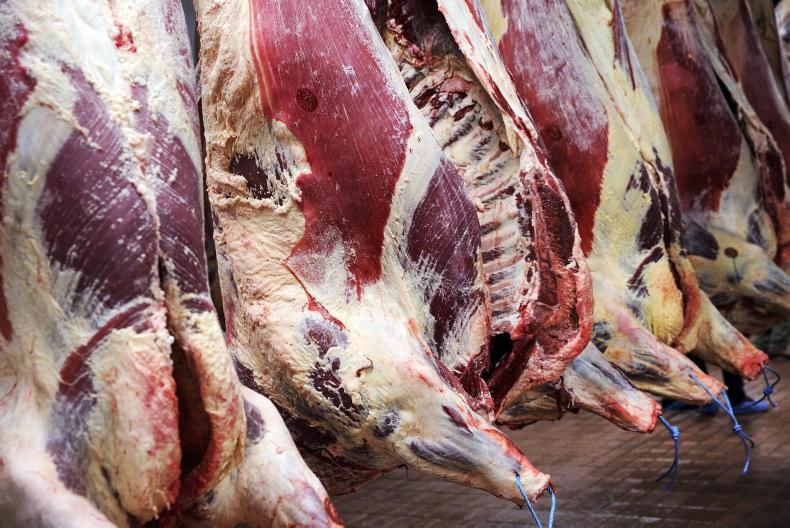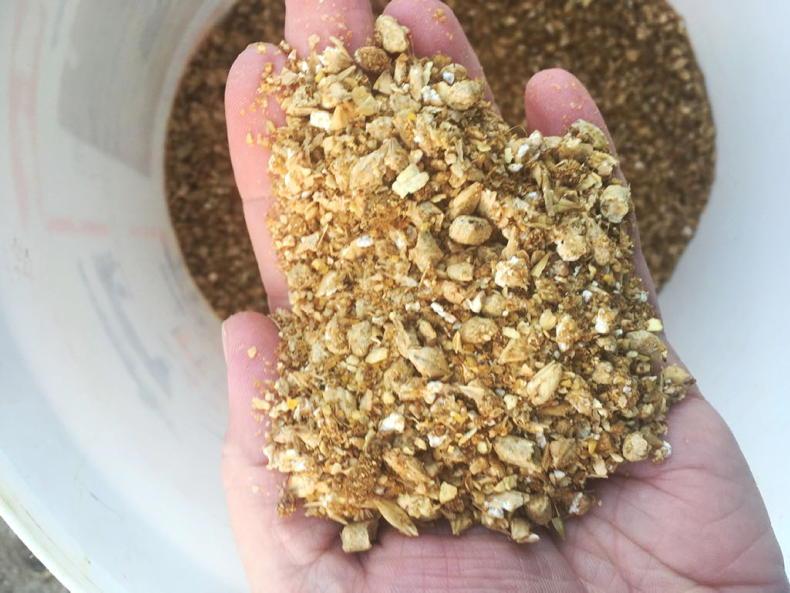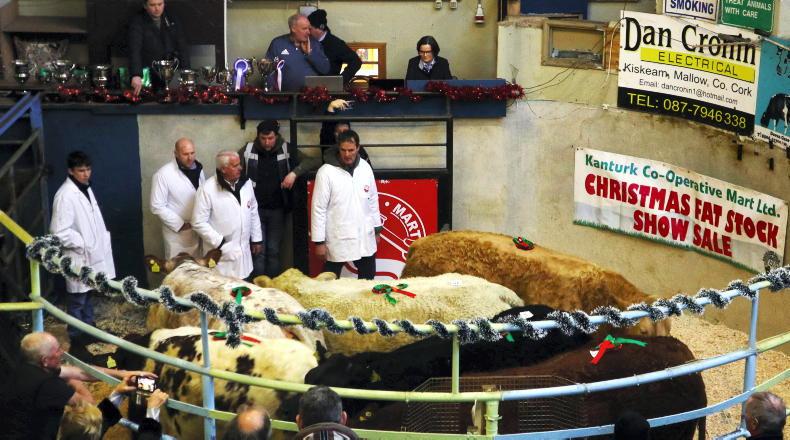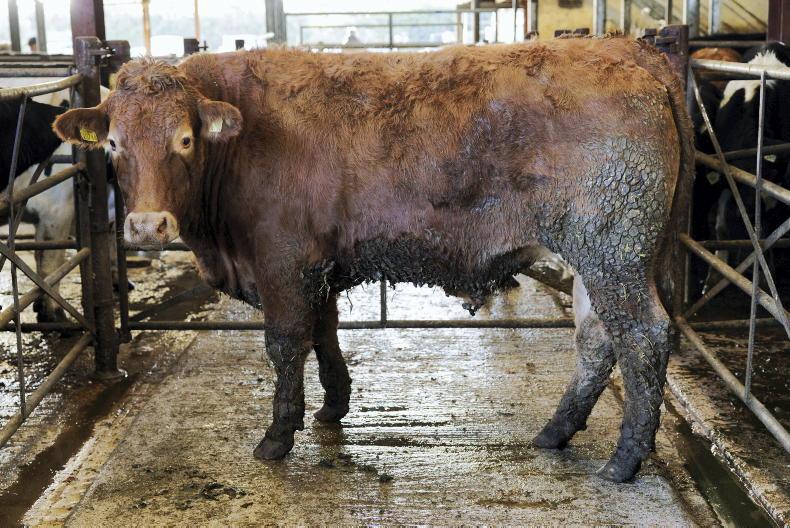Where farmers are planning to move store cattle on to an intensive finishing diet with a target slaughter date around late May, there a few things to keep in mind.
Changing the ration or increasing concentrate levels too quickly can cause digestive problems in cattle.
To help transition animals from a high forage store diet to an intensive finishing diet, outlined are five tips to follow.
1. Change to a high-energy lower-protein ration
Most farmers offer cattle a general-purpose ration during the store period, usually with a crude protein level of 16%.
However, when finishing cattle, it is all about feeding a high-energy ration to get animals to the right fat cover.
A 16% protein ration will encourage animals to keep laying down lean muscle rather than fat cover.
Choose a finishing ration with at least 70% cereal content, preferably maize and barley.
Include a good source of rumen digestible fibre such as soya hulls, or sugar beet pulp, and cap protein levels around 12% to 13%.
2. Phase animals on to the finishing ration
A finishing ration will be high in starch, so phase cattle on to the new blend over the course of one week. This allows the rumen adjust to the higher starch levels in the finishing ration.
If cattle are currently eating 3kg or 4kg/day of a general-purpose beef ration, start off by replacing 1kg of the store ration with 1kg of the finishing ration.
After two to three days, increase the finishing ration in the mix to 2kg/day. By the end of the week, move animals on to the finishing ration only.
3. Split concentrate feeding between a morning and evening feed
When transitioning cattle on to a finishing ration, another way to avoid digestive upsets is to split meal feeding over a morning and evening allocation.
Once cattle are settled on the finishing diet and eating more than 3kg/day of meal, again, split concentrates over a morning and evening feed.
4. Fibre and fresh water
Keep a constant supply of fresh palatable forage in front of cattle at all times, preferably high-quality silage for steers and heifers or straw for bulls.
Forage will provide fibre and maintain a healthy rumen function.
Fresh water is also important in the finishing diet. Keep water troughs cleaned out regularly, as dirty water will reduce intakes. If cattle are drinking less, it will limit concentrate intake and, ultimately, weight gain.
5. Feed space provision
As concentrate levels step up to higher levels, make sure animals have enough space at the feed barrier.
This will ensure all cattle can access concentrate at the same time, preventing dominant animals gorging on meal and eating more than their intended allocation.
Again, this will help to reduce the risk of digestive upsets as animals move on to a high-energy, high-starch diet.
Read more
Live beef exports up 20% in 2022
Watch: first grass cover of 2022 completed on Tullamore Farm
Where farmers are planning to move store cattle on to an intensive finishing diet with a target slaughter date around late May, there a few things to keep in mind.
Changing the ration or increasing concentrate levels too quickly can cause digestive problems in cattle.
To help transition animals from a high forage store diet to an intensive finishing diet, outlined are five tips to follow.
1. Change to a high-energy lower-protein ration
Most farmers offer cattle a general-purpose ration during the store period, usually with a crude protein level of 16%.
However, when finishing cattle, it is all about feeding a high-energy ration to get animals to the right fat cover.
A 16% protein ration will encourage animals to keep laying down lean muscle rather than fat cover.
Choose a finishing ration with at least 70% cereal content, preferably maize and barley.
Include a good source of rumen digestible fibre such as soya hulls, or sugar beet pulp, and cap protein levels around 12% to 13%.
2. Phase animals on to the finishing ration
A finishing ration will be high in starch, so phase cattle on to the new blend over the course of one week. This allows the rumen adjust to the higher starch levels in the finishing ration.
If cattle are currently eating 3kg or 4kg/day of a general-purpose beef ration, start off by replacing 1kg of the store ration with 1kg of the finishing ration.
After two to three days, increase the finishing ration in the mix to 2kg/day. By the end of the week, move animals on to the finishing ration only.
3. Split concentrate feeding between a morning and evening feed
When transitioning cattle on to a finishing ration, another way to avoid digestive upsets is to split meal feeding over a morning and evening allocation.
Once cattle are settled on the finishing diet and eating more than 3kg/day of meal, again, split concentrates over a morning and evening feed.
4. Fibre and fresh water
Keep a constant supply of fresh palatable forage in front of cattle at all times, preferably high-quality silage for steers and heifers or straw for bulls.
Forage will provide fibre and maintain a healthy rumen function.
Fresh water is also important in the finishing diet. Keep water troughs cleaned out regularly, as dirty water will reduce intakes. If cattle are drinking less, it will limit concentrate intake and, ultimately, weight gain.
5. Feed space provision
As concentrate levels step up to higher levels, make sure animals have enough space at the feed barrier.
This will ensure all cattle can access concentrate at the same time, preventing dominant animals gorging on meal and eating more than their intended allocation.
Again, this will help to reduce the risk of digestive upsets as animals move on to a high-energy, high-starch diet.
Read more
Live beef exports up 20% in 2022
Watch: first grass cover of 2022 completed on Tullamore Farm










SHARING OPTIONS